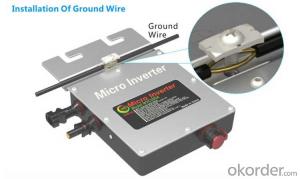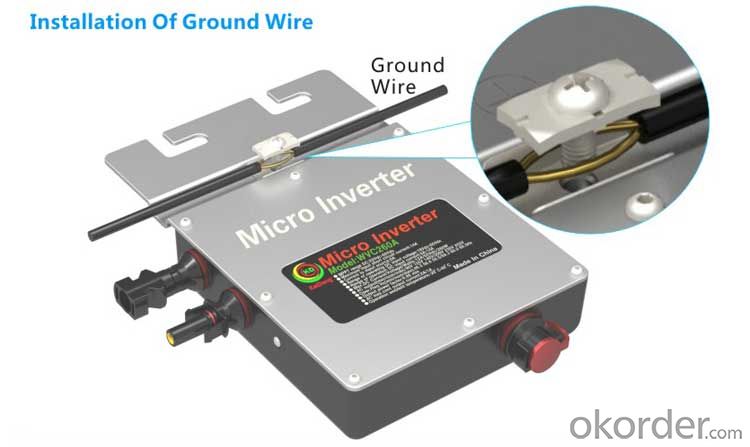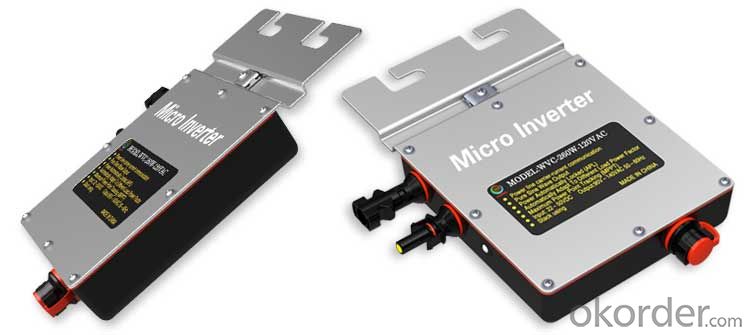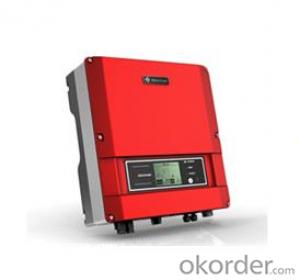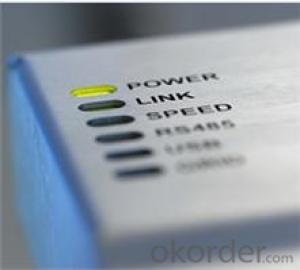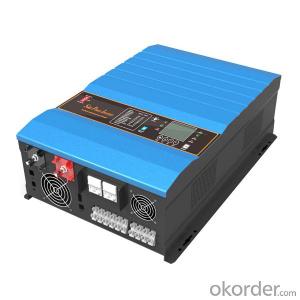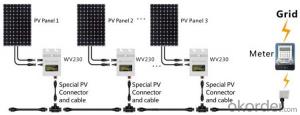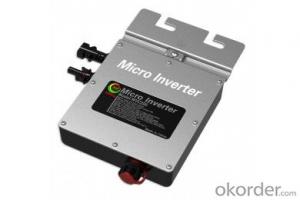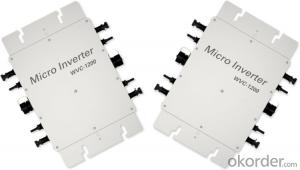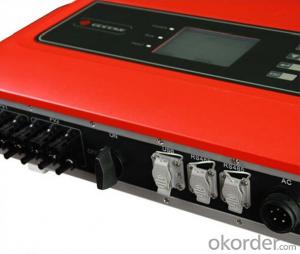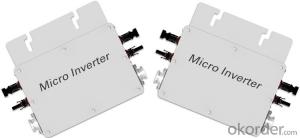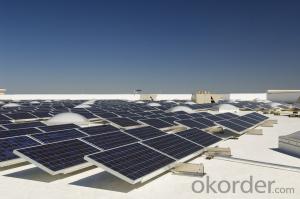Solar Inverter 10kva KD-WV230 Interver, 260W, High Efficiency & Best Cost-Effectiveness
- Loading Port:
- China main port
- Payment Terms:
- TT OR LC
- Min Order Qty:
- 1000 pc
- Supply Capability:
- 100000 pc/month
OKorder Service Pledge
OKorder Financial Service
You Might Also Like
Structure
DC input voltage range:22-50VDC
AC output voltage range:80-160VAC/180-260VAC
AC output power :260W
AC frequency range:50Hz/60Hz
G.W.:1.1kg
Size:250mm*200mm*60mm
KD-WV230 Series Using IP67 waterproof streamline design, Can effectively prevent rainwater on the surface erosion, Built-in high-performance Maximum Power Point Tracking(MPPT)Function,Better able to track changes in the solar luminosity and control different output power, Effectively capture and collect sunlight. AC electric power transmission using the reverse transmission technology, Is one of our patented technology, The inverter output power can provide load priority use, Extra electricity to the grid, Efficient use of the inverter to the power emitted, Electricity transmission rate of up to 99%.
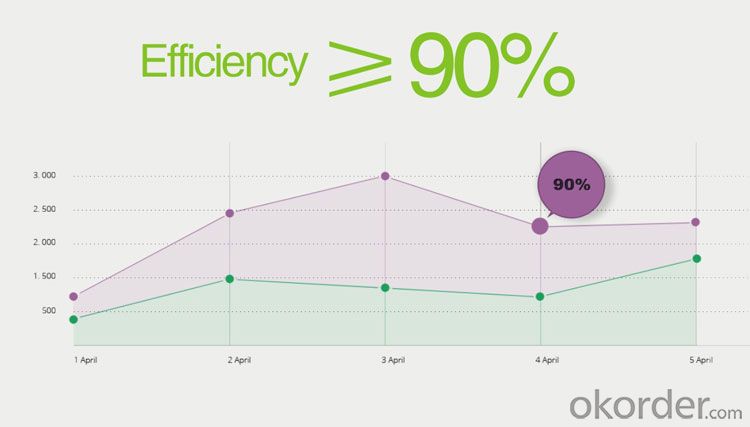
Features

Pure Sine Wave Output;
High performance Maximum Power Point Tracking(MPPT);
Power Automatically Locked(APL);
Reverse power transmission;
High-Frequency High Conversion Rate;
Anti-Islanding Protect;
Input /output is fully isolated to protect the electrical safety;
Multiple parallel stacking;
The Leading Patent Technology;
IP67 WaterProof;
Flexible Installation;
Simplify maintenance (user serviceable)
High Efficiency & Best Cost-Effectiveness
Images
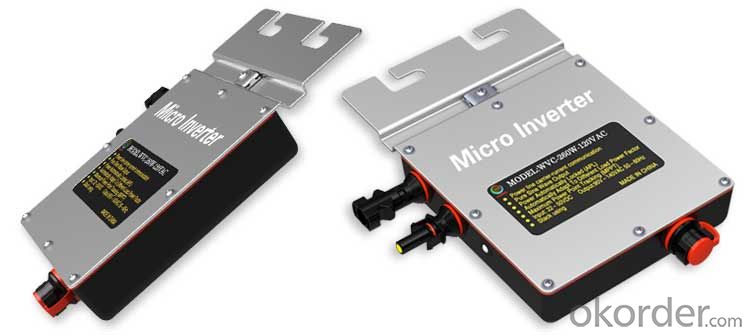

Specification
Input Data | KD-WV230-120VAC/230VAC | ||||
Recommended input power | 200-300Watt | ||||
Recommend the use of PV modules | 300W/Vmp>34V/Voc<50V | ||||
Maximum input DC voltage | 50V | ||||
Peak power tracking voltage | 25-40V | ||||
Operating Voltage Range | 17-50V | ||||
Min / Max start voltage | 22-50V | ||||
Maximum DC short current | 15A | ||||
Maximum Input Current | 9.8A | ||||
Output Data | @120VAC | @230VAC | |||
Peak power output | 260Watt | 260Watt | |||
Rated output power | 250Watt | 250Watt | |||
Rated output current | 2.08A | 0.92A | |||
Rated voltage range | 80-160VAC | 180-260VAC | |||
Rated frequency range | 57-62.5Hz | 47-52.5Hz | |||
Power factor | >96% | >96% | |||
Maximum units per branch circuit | 15PCS(Single-phase) | 30PCS(Single-phase) | |||
Output Efficiency | @120VAC | @230VAC | |||
Static MPPT efficiency | 99.5% | 99.5% | |||
Maximum output efficiency | 92.3% | 94.6% | |||
The average efficiency | 91.2% | 93.1% | |||
Night time power consumption | <50mW Max | <70mW Max | |||
THDI | <5% | <5% | |||
Exterior | |||||
Ambient temperature | -40°C to +60°C | ||||
Operating temperature range (inverter inside) | -40°C to +82°C | ||||
Dimensions (WxHxD) | 195mm*130mm*32mm | ||||
Weight | 0.65kg | ||||
Waterproof Rating | IP67 | ||||
Cooling | Self-cooling | ||||
Feature | |||||
Power transmission mode | Reverse transfer, load priority | ||||
Electromagnetic compatibility | EN50081.part1EN50082.part1 | ||||
Grid disturbance | EN61000-3-2 Safety EN62109 | ||||
Grid detection | DIN VDE 1026 UL1741 | ||||
Certificate | CEC,CE National patent technology | ||||
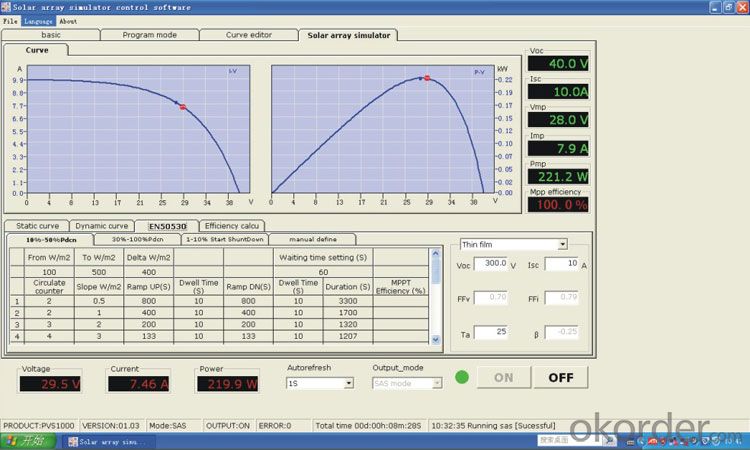 | |||||
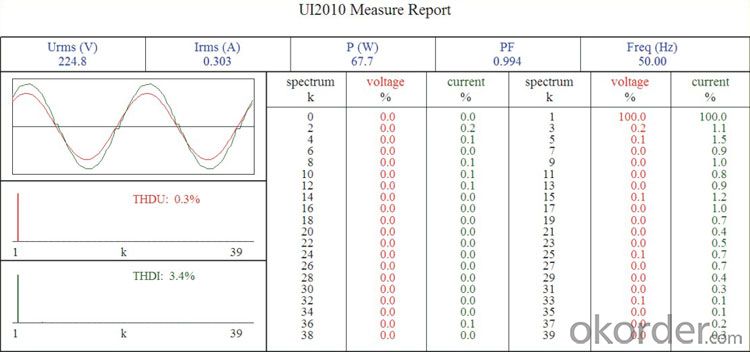
FAQ
Can we visit your factory?
Surely, I will arrange the trip basing on your business schedule.
Can you do OEM for us?
Yes, we can.
How do you pack your products?
We have rich experience on how to pack the panels to make sure the safety on shipment when it arrives at the destination.
Can you help us install the module if we cooperate with you?
We haven’t entered into installation sector, but we have the plan in near future.
- Q: Can a solar inverter be used with a solar-powered educational system?
- Yes, a solar inverter can be used with a solar-powered educational system. A solar inverter is an essential component that converts the direct current (DC) produced by solar panels into alternating current (AC) that can be used to power electrical devices, including educational systems. By using a solar inverter, the solar energy generated by the system can be efficiently utilized for educational purposes.
- Q: Can a solar inverter be used with a solar-powered backup generator?
- Yes, a solar inverter can be used with a solar-powered backup generator. A solar inverter is responsible for converting the DC (direct current) electricity generated by solar panels into AC (alternating current) electricity that can be used to power household appliances and other electrical devices. A solar-powered backup generator, on the other hand, uses solar energy to charge its batteries or store excess electricity. When the solar panels are generating electricity, the solar inverter will convert the DC electricity into AC electricity, which can be used directly in the household or sent back to the grid if the system is connected to it. If there is excess electricity being generated and the batteries of the solar-powered backup generator are fully charged, the solar inverter can divert the excess electricity to other loads or devices. During periods when solar energy is insufficient or not available, the solar-powered backup generator can kick in and provide the necessary electricity to power the house or recharge the batteries. In this case, the solar inverter will still be responsible for converting the DC electricity generated by the solar-powered backup generator into AC electricity. So, to summarize, a solar inverter can definitely be used with a solar-powered backup generator to ensure a continuous supply of electricity even when solar energy is limited.
- Q: How do you monitor the performance of a solar inverter?
- To monitor the performance of a solar inverter, several methods can be employed. Firstly, real-time monitoring systems can be installed that collect data on various parameters such as power output, voltage, current, and temperature. These systems often include data loggers or communication modules that transmit the information to a central monitoring station or cloud-based platform. Additionally, regular inspections and maintenance checks can be conducted to visually inspect the inverter for any signs of damage, loose connections, or overheating. Monitoring the inverter's efficiency over time, comparing the actual power output with the expected output based on solar irradiance and temperature, can also provide insights into its performance. Furthermore, some solar inverters come with built-in monitoring capabilities, allowing users to access performance data through a web-based interface or mobile app. This provides real-time and historical data, including energy production, system faults, and alerts, enabling users to identify and address any issues promptly. Overall, a combination of real-time monitoring systems, regular inspections, and utilizing inverter-specific monitoring features can effectively monitor the performance of a solar inverter.
- Q: What is the maximum AC current output of a solar inverter?
- The maximum AC current output of a solar inverter depends on its size and rating. It can range from a few amps to several hundred amps, typically ranging between 5-100 amps for residential inverters and going up to higher currents for commercial or utility-scale inverters.
- Q: Can a solar inverter be used with a solar water pumping system?
- Yes, a solar inverter can be used with a solar water pumping system. The solar inverter converts the DC power generated by the solar panels into AC power, which is required to operate the water pump. This allows for the efficient and reliable operation of the solar water pumping system using solar energy.
- Q: Can a solar inverter be used with solar-powered electric vehicle charging stations?
- Yes, a solar inverter can be used with solar-powered electric vehicle charging stations. The solar inverter is responsible for converting the direct current (DC) generated by solar panels into alternating current (AC) that can be used to charge electric vehicles. By integrating a solar inverter into the charging station, the solar energy can be efficiently harnessed and utilized to power the EV charging process.
- Q: What are the common fault indications in a solar inverter?
- Some common fault indications in a solar inverter include a sudden loss of power output, frequent or recurring tripping of the inverter, abnormal or fluctuating voltage readings, unusual noises or smells emanating from the inverter, error messages or fault codes displayed on the inverter's screen, and physical damage or visible signs of overheating.
- Q: What is the role of a solar inverter in voltage control?
- The role of a solar inverter in voltage control is to convert the direct current (DC) generated by solar panels into alternating current (AC) that is suitable for use in the electrical grid. It also ensures that the voltage output from the solar panels matches the voltage requirements of the grid, thereby maintaining a stable and consistent voltage level. This helps prevent voltage fluctuations and ensures efficient power transmission and distribution.
- Q: What is the role of a solar inverter in a solar-powered electric fence?
- The role of a solar inverter in a solar-powered electric fence is to convert the direct current (DC) electricity generated by the solar panels into alternating current (AC) electricity that can be used by the electric fence system. The inverter ensures that the voltage and frequency of the electricity are compatible with the electric fence equipment, allowing it to function effectively and safely.
- Q: Can a solar inverter be used in conjunction with a wind turbine?
- Indeed, a wind turbine can be utilized alongside a solar inverter. Both solar panels and wind turbines yield direct current (DC) electricity, necessitating conversion to alternating current (AC) for household and commercial usage. While solar inverters are specifically devised to convert DC power from solar panels to AC power, they can also accommodate DC power produced by wind turbines. By linking a wind turbine to a solar inverter, the DC power generated by the wind turbine can be transformed into AC power, enabling it to energize electrical appliances or be channeled into the power grid. This amalgamation of renewable energy sources, such as solar and wind, within a single system enhances the dependability and efficiency of energy generation.
Send your message to us
Solar Inverter 10kva KD-WV230 Interver, 260W, High Efficiency & Best Cost-Effectiveness
- Loading Port:
- China main port
- Payment Terms:
- TT OR LC
- Min Order Qty:
- 1000 pc
- Supply Capability:
- 100000 pc/month
OKorder Service Pledge
OKorder Financial Service
Similar products
Hot products
Hot Searches
Related keywords
